As we swam back towards the boat, I could tell that something was off. It was becoming more and more difficult to breathe.
Before diving in the Red Sea, I must admit, with the unfortunate amount of litter I saw around northern Egypt, I feared for the water. I had always heard good things about diving in the Red Sea, but at the same time, I expected bleached, brown, and dying coral with over-fished waters and tons of trash.
So, it was to my absolute delight that I was greeted by the most vibrant reef I have ever seen in person.
Hurghada, Red Sea
The area I went diving in the Red Sea was out of Hurghada.
A beach resort town of 248,000, Hurghada is considered to be one of Egypt’s main tourist centers.
It’s here that you’ll be able to find quite nice, all-inclusive hotels, beach bars, plenty of other tourists, and 14,742 unfinished buildings that look like they haven’t been touched in years.
I ended up asking someone about all the unfinished buildings and he said it was because they were caught off guard by COVID and had to cease development.
Yeaaa doubtful. Seeing as the overwhelming majority of buildings have clearly been sitting around unfinished for more than a hot minute, I’m not buying it. It was more likely a severe case of too much too soon.
But that’s not why we’re in Hurghada, is it? It’s for diving in the Red Sea, not for the unfinished buildings!
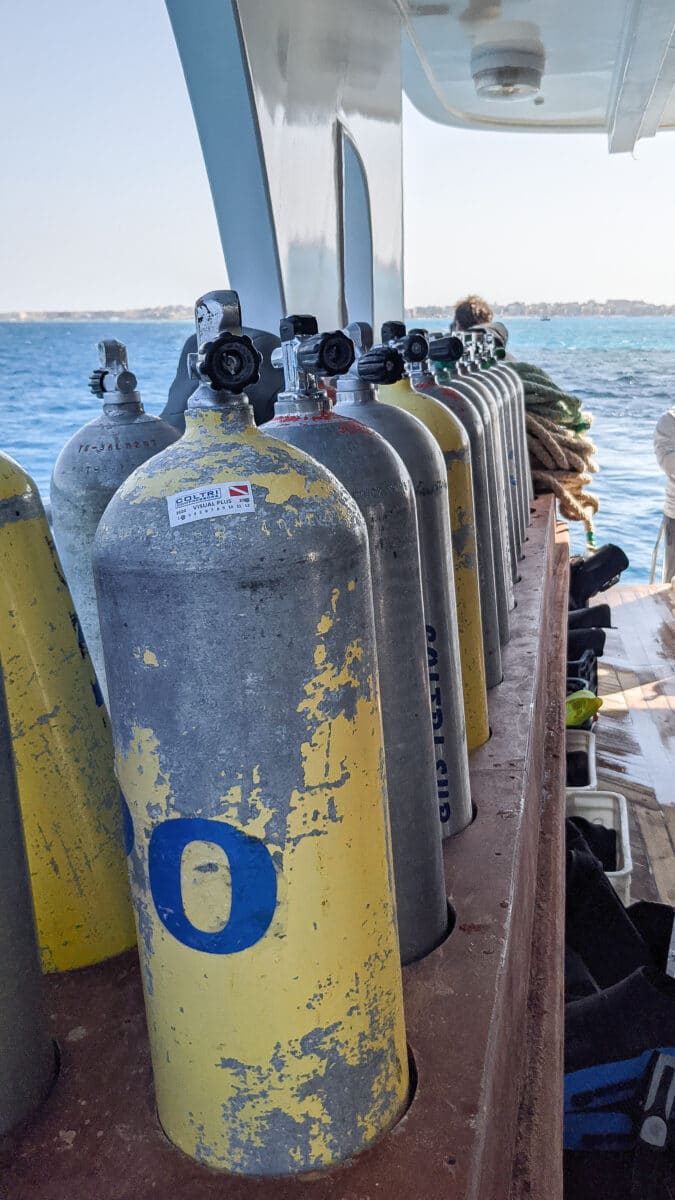
The Start
The general process was pretty standard for diving. Be in the hotel lobby at 7:00 AM to meet the taxi, on the boat by 8:30, and cast off at 9:00.
Everything was streamlined and easy to navigate. Though if they’re still required when you go, be sure to wear your mask while in the taxi. One person didn’t have his mask on as we approached one of many checkpoints and he got fined 50 Egyptian pounds (about $3.00).
I know that’s not a lot, but he was a local Egyptian, and they still pulled him out of the car to give him the third degree.
The Boats
The boats were incredible. If you dive you can probably relate to what I’m about to say. Most dive boats I’ve been on in foreign countries are floating pieces of crap that look like they’re either going to sink or give you a case of tetanus.
These, however, were the nicest, newest, and cleanest dive boats I had ever seen in person. I said as much to the skipper, including a more colorful description of other boats than the one I just used above. He smirked and nodded at me. He knew.
The boats were shared by several dive operators at the same time, so expect to see multiple crews, each running their own dive. My boat was far from full and still had around twenty-five people on it.
Don’t worry about the numbers though, because many of these people were crew members. Plus, each operator’s dive was slightly different, so we didn’t encounter many others once we were underwater despite there being several of these large boats.
If you’re concerned about social distancing, no worries, there is plenty of space, and the top deck is all open air.
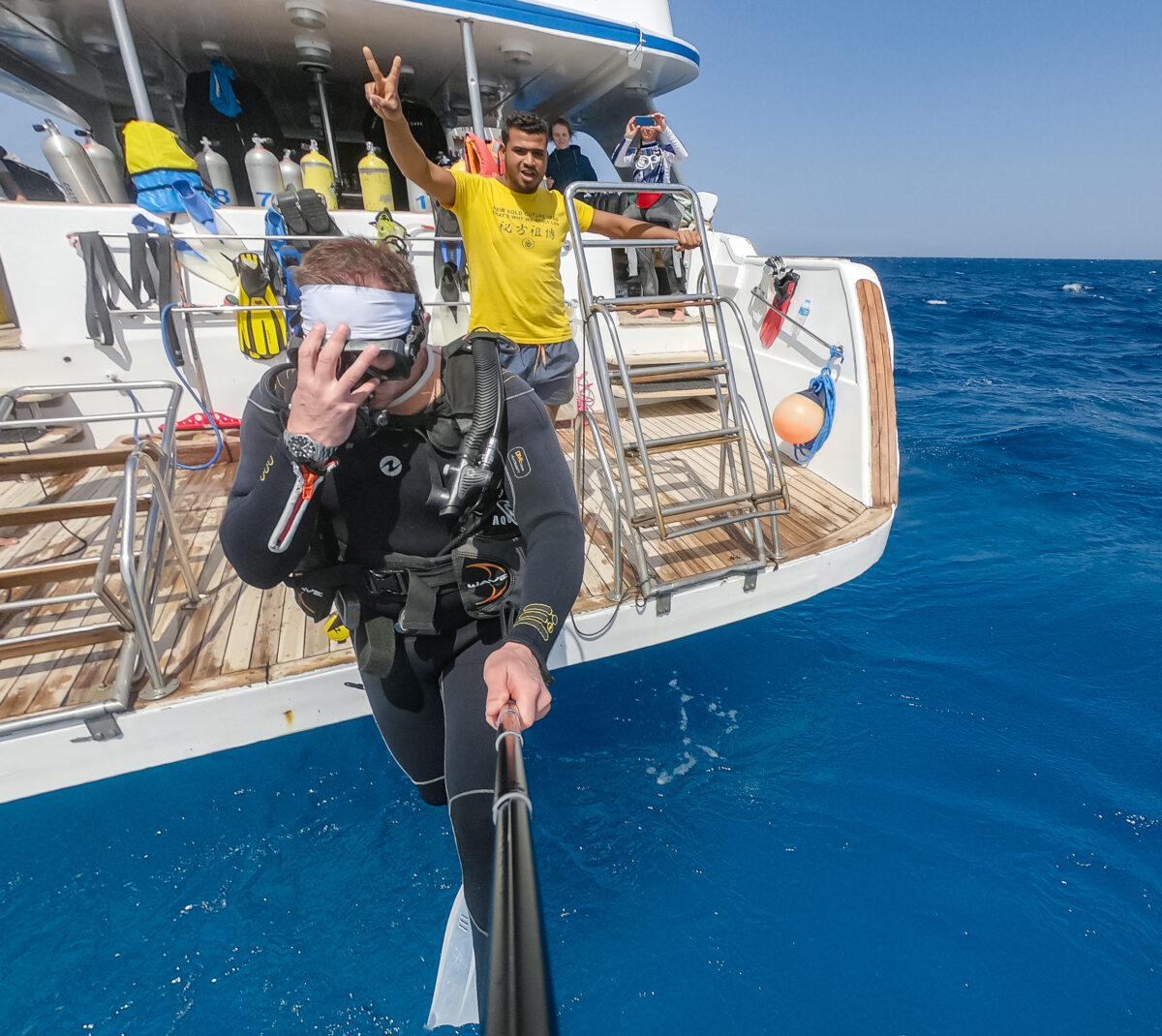
The Dives
While in Hurghada, I did four dives at four different locations. They were Small Giftun, South Abu Ramada, El Fanadir North Side, and El Fanadir South Side.
Dives will be spread out as they usually are, in the morning and afternoon.
After the morning dive it’s back on the boat for a very full lunch. You will be well fed on these boats.
My usual experience on dive boats is that you’ll either get fruit slices and water or nothing at all. Here we got eight different trays of food with things like spaghetti, chicken, and local Egyptian dishes.
After lunch, it was back on the move to the next dive site.
The following three dives were all great as well, but they just couldn’t match the first.
While I was down on the first dive, the wind above got super strong. This eventually led to choppy water and diminished visibility. Though I should note that this visibility was still better than in other popular locations like Cozumel.
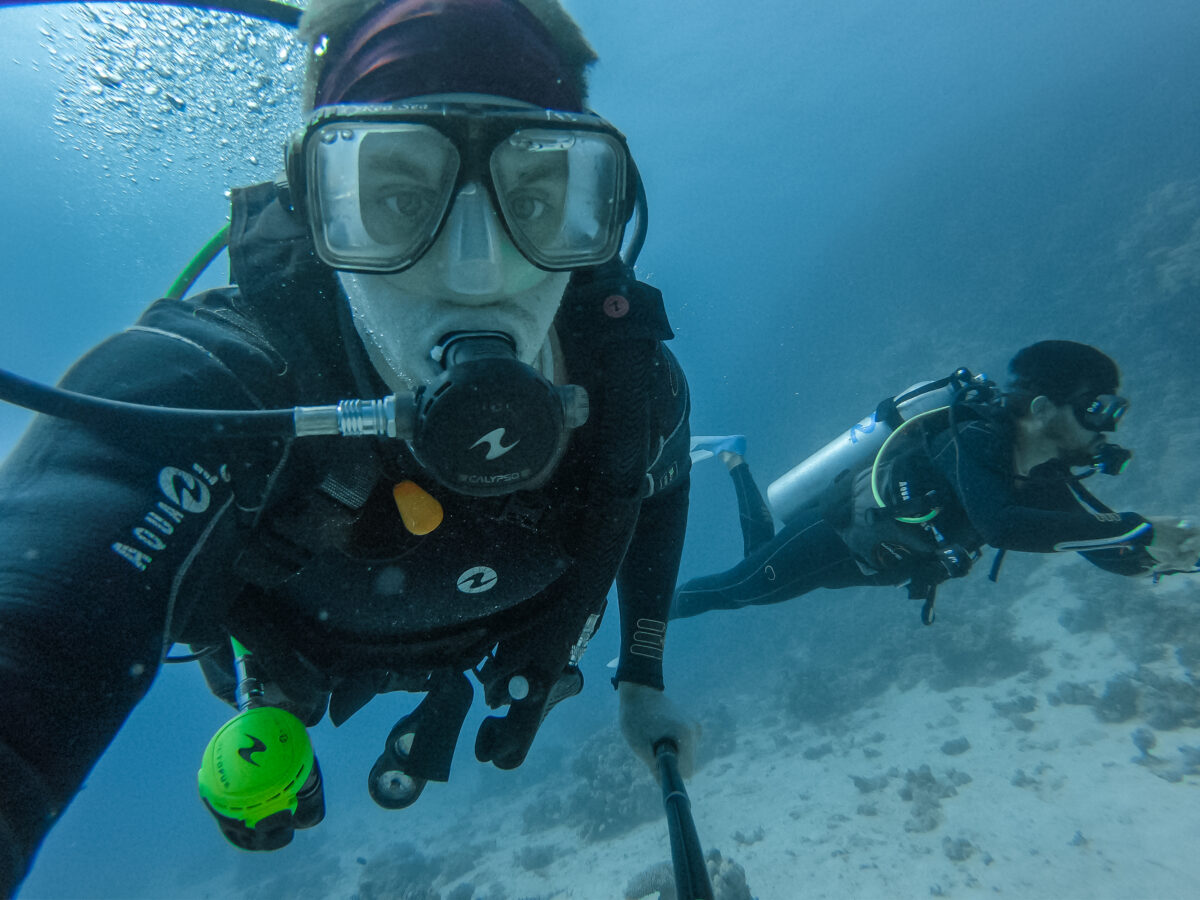
Expect a long, full day while diving in the Red Sea!
Dive one was at a reef called Small Giftun. I can’t say enough about this dive. This was the one. This was the color explosion. I was completely floored by the visuals. Everything about it was perfect. Visually, it was the best dive I can remember ever taking.
Dive two at South Abu Ramada was about half an hour away from the first by boat. It was here that the effect the wind had on the water started to show itself. Visibility was still around fifteen meters but even the divemaster was complaining about it.
Dive three at El Fanadir North Side was a nice change of pace because while it was still at a reef, there was also a small wreck to explore. As this was the second day and the winds had still not subsided, visibility had gotten a little bit worse, but it still wasn’t terrible.
Dive four at El Fanadir South Side, as the name says, took place on the opposite side of the reef from dive three. Visibility remained the same, but this dive was where we saw multiple large octopuses.
I’ve seen several over the years, but they were always smaller than my fist. These however, were all the size of a soccer ball. It was great, especially when we got to see two of them playing with each other and touching tentacles. Just the tips.
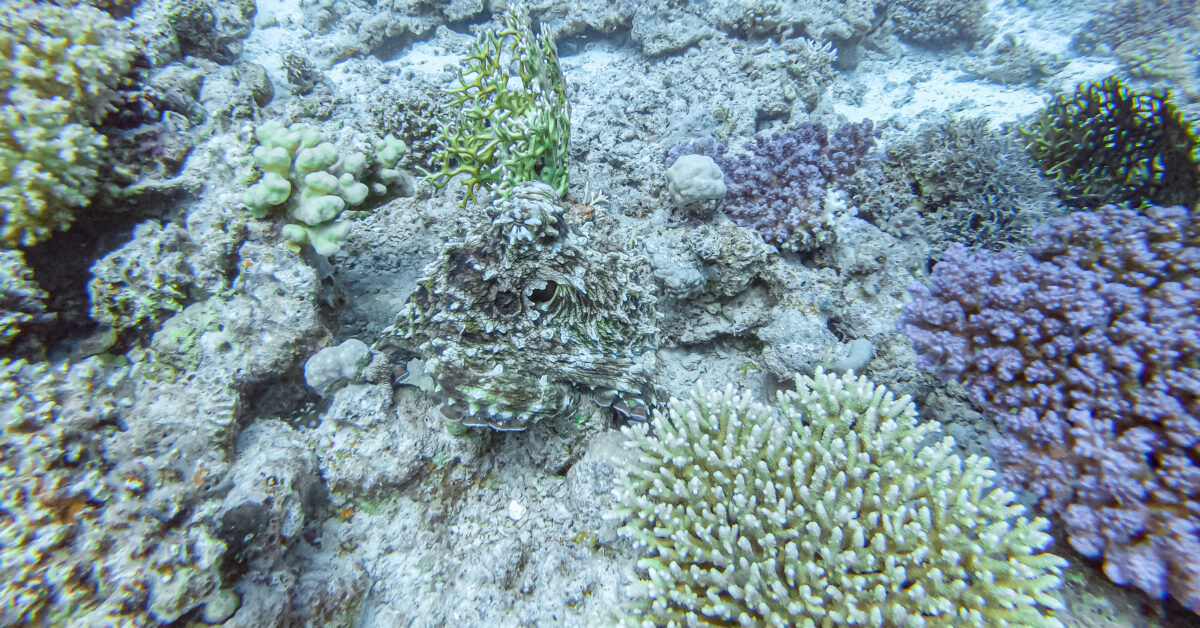
Dive Operators
Finding an operator won’t be difficult for you as Hurghada has more than enough of them.
The operator I used for diving in the Red Sea was Diamond Divers. DO NOT use them.
As I said, the boat was great, and the dive areas were well chosen, but there was something else that went wrong. It’s because of this that I don’t want to link you to them. The only reason I am is so you can see who they are for avoidance purposes. Again, don’t use them. Choose from the dozens of others instead.
My First Underwater Emergency While Diving in the Red Sea
I figure this is what you probably wanted to read most. So naturally, I saved it for the end. Clever, right?
So, what happened? Well, on the first dive of day two (aka dive three) I had a problem. And depending on the circumstances and diver, it was something that could have easily gone very bad.
As we swam back towards the boat, I could tell that something was off. It was becoming harder and harder to breathe. I immediately checked my pressure gauge which I just had looked at only a minute earlier. It read that I was around sixty bars. The same as before.
That’s around what it should have read. I did however know that I was probably burning more air than I normally would. The water was freezing, we had been fighting a very strong current, and I was chasing around a couple schools of fish.
So, what was going on? I didn’t know for certain, but it felt like I was very low on air. With this pressing issue, I signaled to the divemaster that something was wrong.
It abruptly went from bad to worse, so I signaled that I needed to share air.
In his infinite wisdom (jackass), he looked at my pressure gauge, saw that I had plenty of air, signaled how much I had remaining, signaled okay, and then backed off.
I again signaled that I needed to share air. At this point, it was difficult to breathe. Yet he floated there and looked at me like I was stupid.
With him backing off, at this point I began an emergency ascent. Luckily, we had already been swimming at a shallow depth for a few minutes, so I didn’t get hit with decompression sickness.
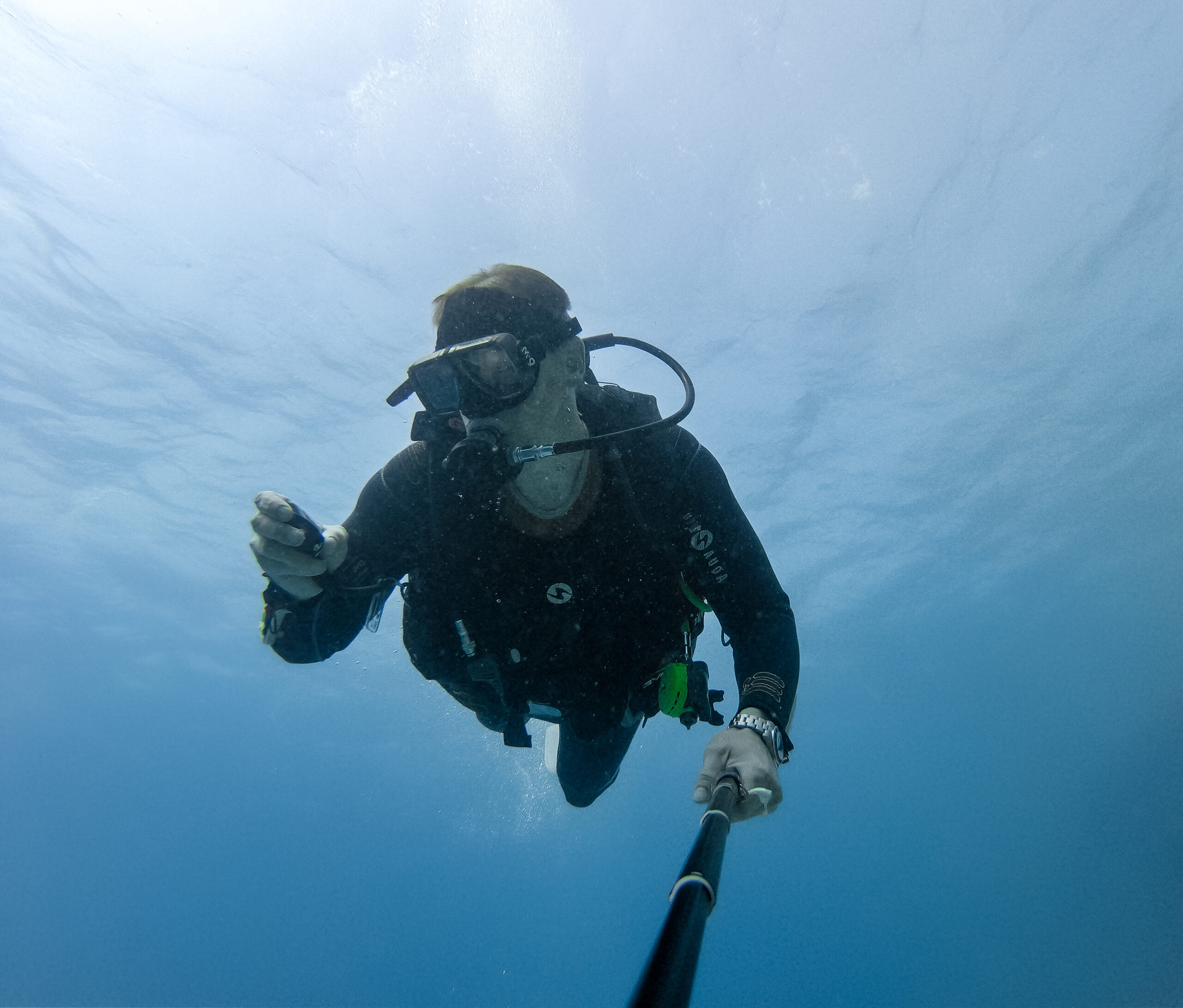
Notice the fish hooks and line I pulled? I had no place to put them, so I stabbed them into my GoPro stick.
It was cutting it close.
I remember when I broke through the surface of the water. Spitting out my regulator. That huge gasp followed by some heavy breathing while I got my breath back.
The relief, followed by my unbridled fury.
I floated there for a bit, looking up at the boat and the people on it who were probably wondering why I had surfaced alone.
Eventually, I got back onto the boat where I exchanged some not-so-kind words with the divemaster.
He was laughing it off like I overreacted until I used what I refer to as my work voice. It sunk in how pissed I was. I wanted to hit him.
Look mf. I’m not going to signal to you that something is wrong if I don’t feel that there is something wrong. I’m not going to signal that we need to share air if I can breathe as if all is well. And I’m sure as hell not going to make an emergency ascent if one isn’t absolutely necessary. Do you follow me?
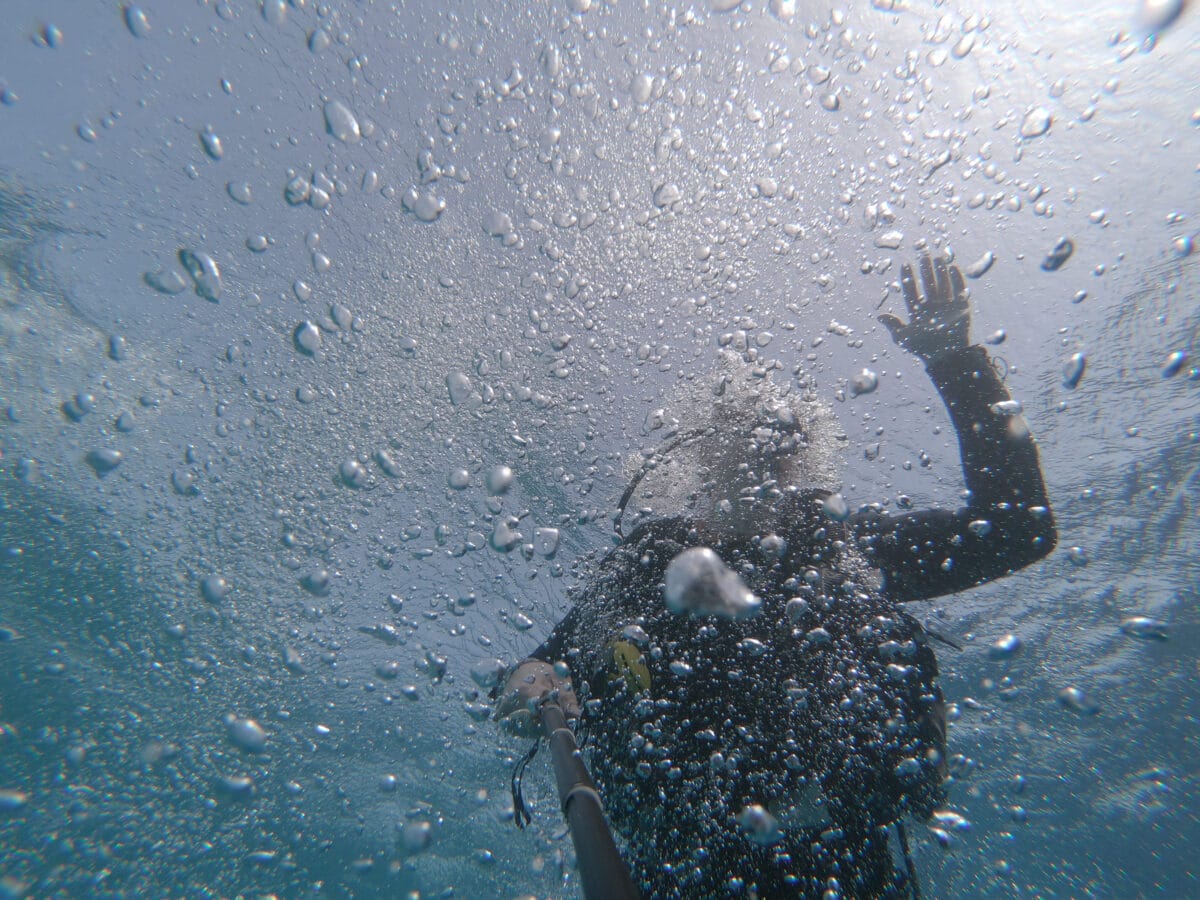
What went wrong?
The crew got to the source of the problem almost right away. It turned out that the needle on my pressure gauge got stuck. Even when unhooked from my tank it was reading that I had sixty bars. They attached it to a new tank and it went right up to two hundred, but removing it again left it at sixty.
They claimed it was the same rig that I had used the previous day. Well, I know for a fact that it wasn’t. All my gear was different except for the hole-filled wetsuit. Plus, the needle sure as hell didn’t get stuck when I used it then.
Does everyone see the problem with this? At the end of the dive, I was swimming around, thinking that I had more air than I really had left due to their broken gear.
Why was I so much lower on air than everyone else? Well, the three others who I went down with were all on Nitrox and had been diving daily for over a month, so their SAC Rate (Surface Air Consumption Rate) was bound to be different than mine.
I was also apparently the only one who was freezing in a ripped-up wetsuit with no booties. And the current. And the fish chasing.
Under normal circumstances, none of these things would have been an issue, but when you think you have more air than you really do…
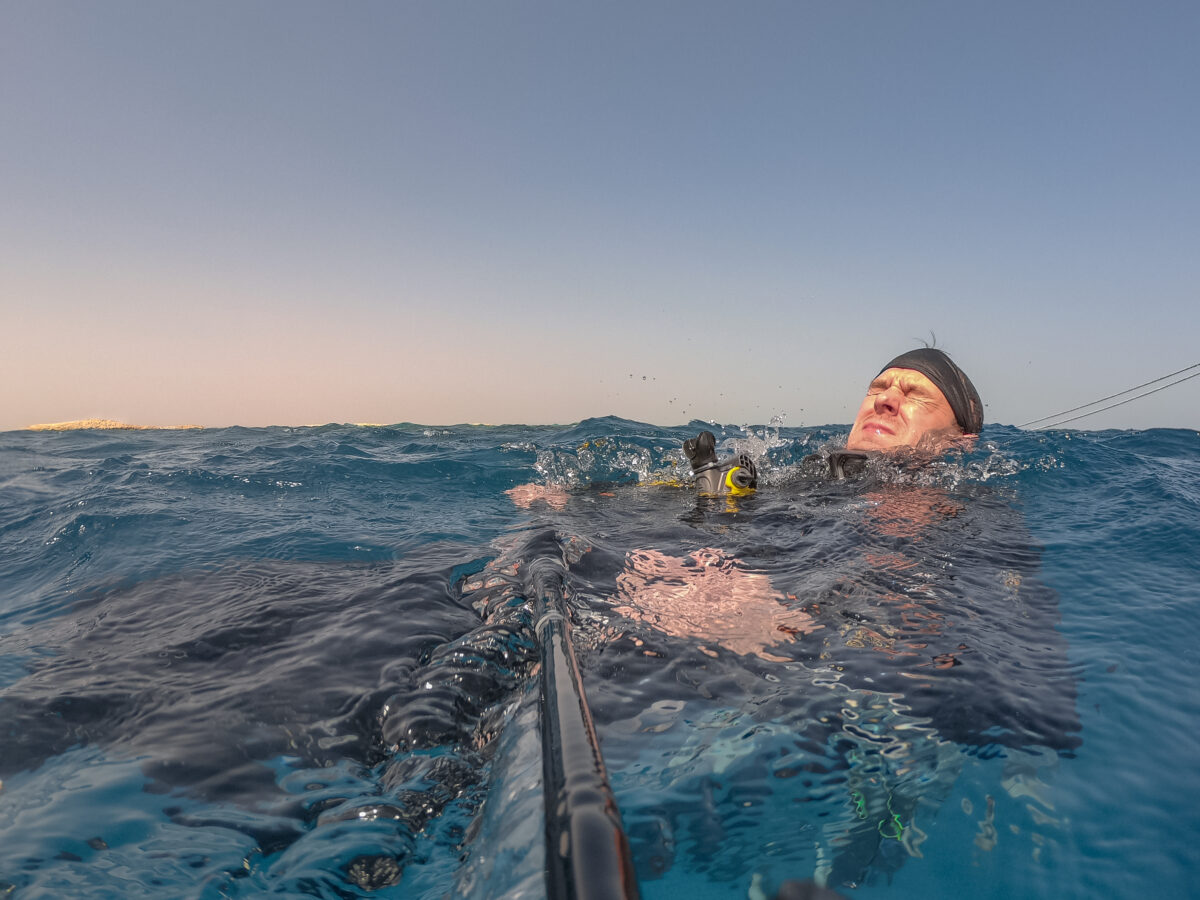
What was their solution?
Well, naturally their solution would be to take a malfunctioning piece of gear out of service, right?
Wrong!
Their solution was to give me a larger tank for the final dive. Yes, you read that right. Rather than removing the broken piece of equipment and giving me something that functioned properly, they just gave me extra air.
So, naturally, I took it upon myself to swap it out. I then switched them back after the final dive.
Why they didn’t immediately remove it from use just blows my mind. They clearly had plenty to spare. Here’s a larger tank though!
I’m normally a big tipper, but I’ll give you one guess how much I tipped these guys.
Hint: It rhymes with zero.
The oops moment.
Apparently, word of what happened made its way around and reached the owner of the dive company because he managed to call the cellphone of my taxi driver and asked to speak with me.
He asked if I was okay and verified what happened. I was pretty mellow with him. It was his company, and they were his employees, but at the same time, it wasn’t his doing. I could also tell that he was irritated that it had happened.
He insisted to me that they would be taking it out of service that night and running thorough tests on it.
Dude. You don’t need to run a thorough test. You can literally look right at it and see, as plain as day that it’s broken.
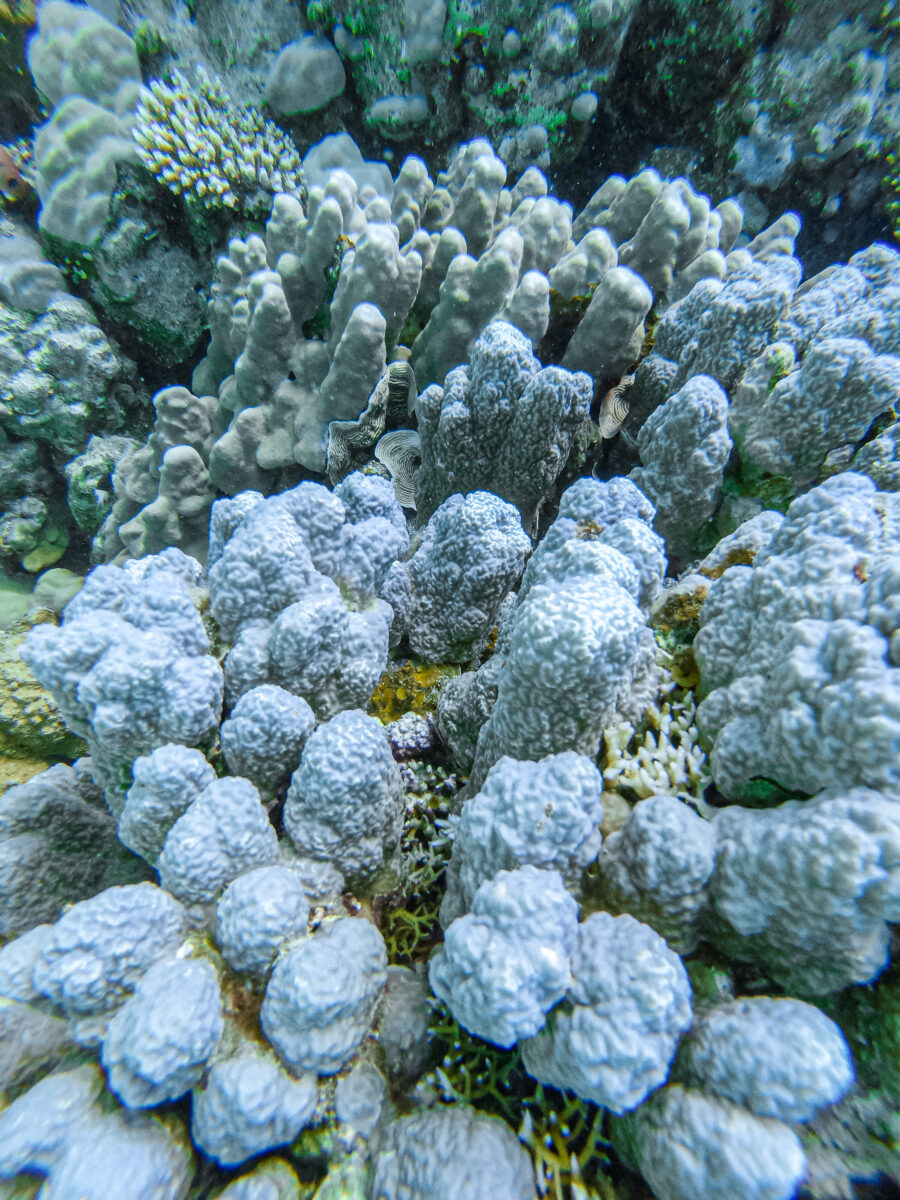
The aftermath of diving in the Red Sea
Another person who was pretty pissed about what had happened was the one who had booked the dives for me. He wanted to call them from the hotel and complain. I told him that I already had some words with them and didn’t feel like he needed to jump in as well.
His immediate thought, and he’s right on this, was what if it had been someone new to diving. Someone who panicked. That could have gotten very ugly, very fast.
Whether or not he decides to book with them again in the future remains to be seen.
Beyond this, I emailed PADI, mentioned what happened in my tour review, and wrote a scathing one-star Diamond Divers Google review which they got taken down. I’ll have to repost it as there were several other reviews that focused on unsafe practices.
I would like to drive home the point that this isn’t a common occurrence. So please, if you were considering taking up diving, don’t let this scare you off.
Has anything like this ever happened to you while you were diving? Either the running out of air or their poor response?
Are you thinking about experiencing some beautiful diving in the Red Sea?
And what do you think? Is it time I upgrade from the GoPro for diving? I certainly do! Is there an underwater camera housing you recommend? I shoot Sony.
Let me know below!
DID YOU ENJOY THIS ARTICLE? PIN IT!
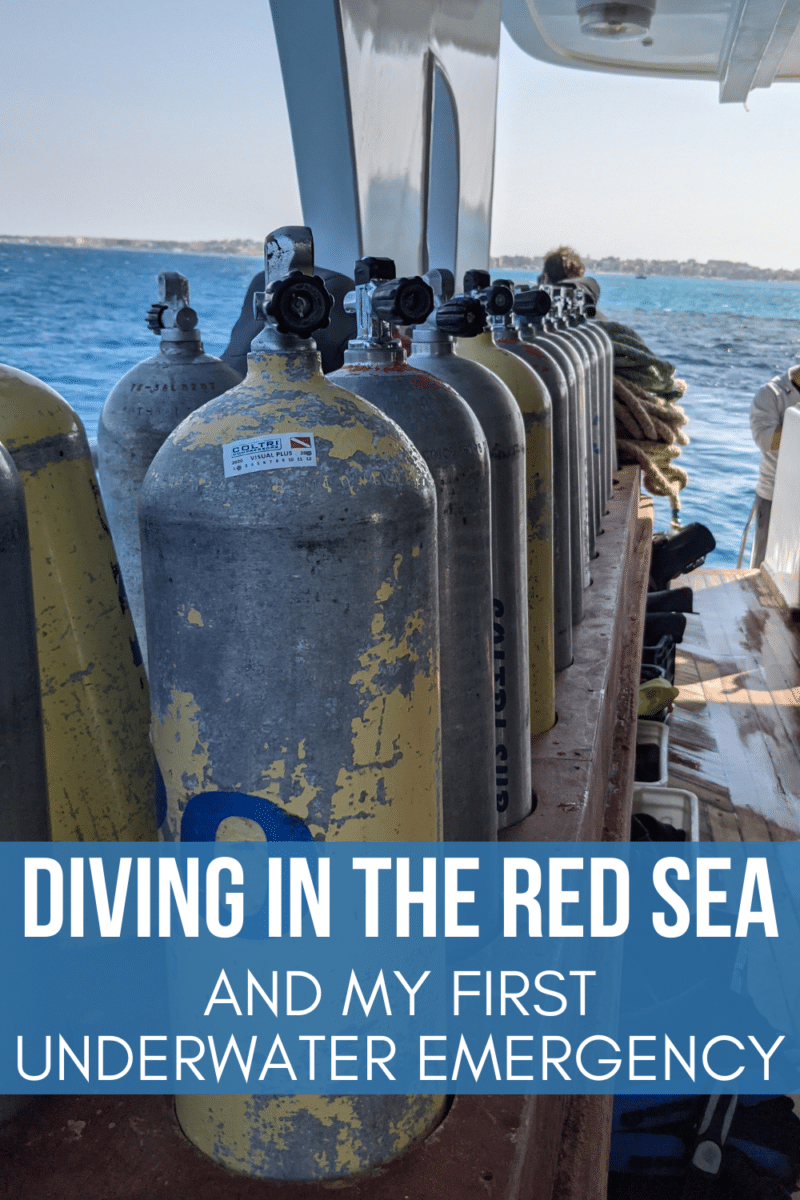

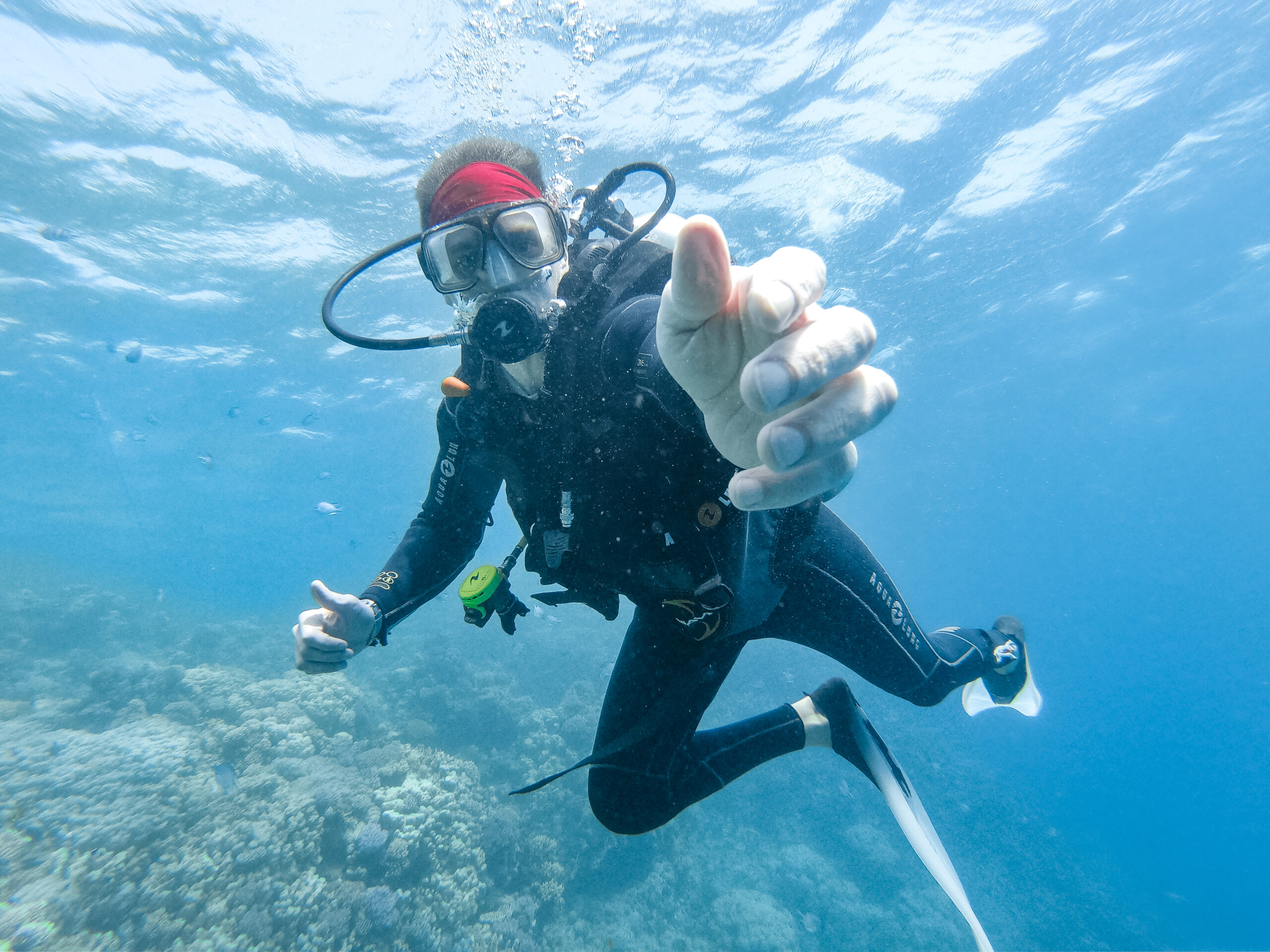

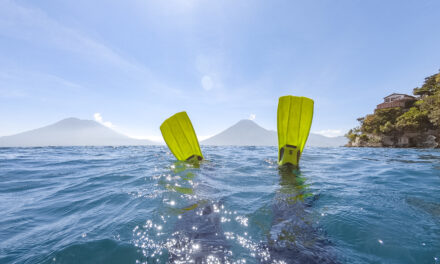
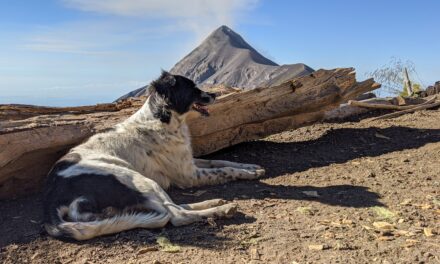


Great story — but scary — glad you are ok Pat. Continue writing — would love to hear more of your travel experiences.
Thank you! Yea, all good! I actually just found out yesterday that the people who arranged the dives for me no longer use this company because of what happened.
For someone who has never been diving, what kind of visibility do you consider ideal or maybe where has it been best in your experience?
Hey, visibility is subjective from diver to diver but what I generally consider to be good is around 50-60 feet with great being anything over 70. 15 feet and below I consider bad and something you should avoid due to added risks. I just did two dives in Costa Rica where the vis was around 10 so I canceled my next day since the wind was projected to get worse.
Then of course there’s always some people who don’t care either and won’t consider it bad if they can still see their own fins.
Oh man this is the first time I’ve ever heard of that happening. I’m sorry you had to go through it. I’ve been diving in the Red Sea and it was beautiful. Don’t stop diving because of this!!
Yea, this was the first time I’ve ever heard of something like this happening. Pre-dive check was all clear too. Still diving though! I just went for a few in Costa Rica, so I’m still at it!
[…] any encounters with the military will be handled by your guide. I only had one run in with them, while in Hurghada, and that was when someone was pulled out of the car and fined 50 Egyptian pounds (about $3.00) for […]
[…] Ancient, regal, and majestic. There are lots of things that can be said about Egypt, and I consider it to be one of my favorite trips in terms of culture and history, even if I did almost drown while diving in the Red Sea. […]
[…] the large majority of my dives have been reef dives, including the one where I almost drown, a few different options came to mind. Shark diving sat clearly at the top of the list. But what […]